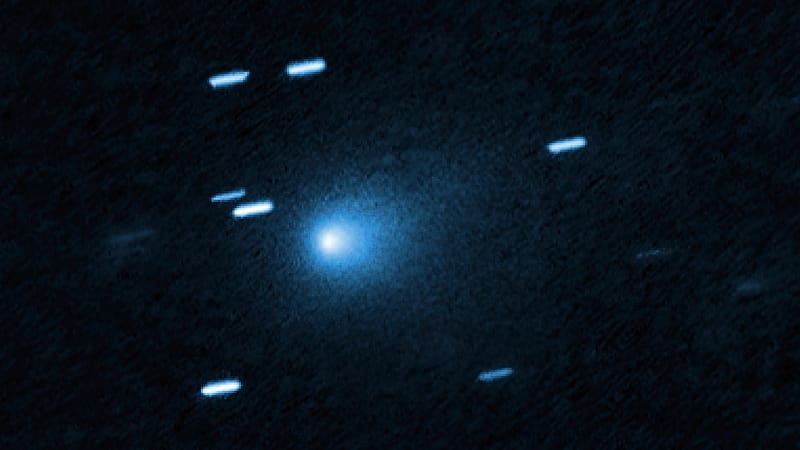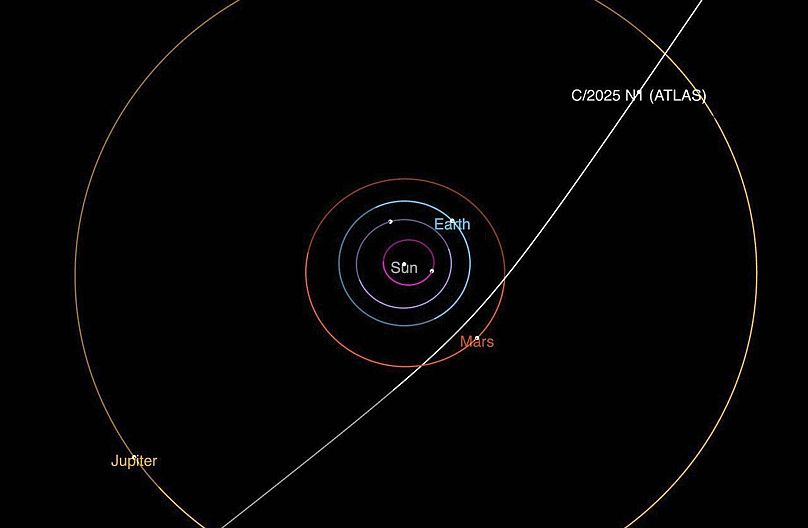
When astronomers first spotted 3I/ATLAS on 1 July 2025 using the ATLAS survey telescope in Chile, it was immediately clear that this was no ordinary space rock.
As only the third confirmed interstellar object ever recorded - after ʻOumuamua in 2017 and 2I/Borisov in 2019 - 3I/ATLAS sparked attention for its icy core enveloped by a coma, the luminous halo of gas and dust.
Its speed and trajectory show that it’s not gravitationally bound to the Sun - meaning it must have originated in another star system and wandered into ours by chance.
While NASA officially identified 3I/ATLAS as a comet and not an asteroid last week, some scientists, most prominently Professor Avi Loeb, a theoretical astrophysicist at Harvard University, has suggested its unusual features could hint at signs of alien technology.
And as it swooped to its closest point to the sun in late October (perihelion), 3I/ATLAS began acting in ways that have astronomers scratching their heads again.
Bizarre observations
Most strikingly, the comet experienced a non-gravitational acceleration near perihelion, moving faster than gravity alone would allow.
Observations from the Atacama Large Millimeter Array (ALMA) showed the comet was 4 arcseconds off its predicted trajectory, according to a recent blog post by Loeb in Medium.
Ordinary comets are nudged slightly by the gases released from their icy surfaces, but the motion of 3I/ATLAS was unusually strong.

Meanwhile, its colour shifted dramatically - from a reddish hue to a deep blue - something atypical for comets, which usually redden as sunlight scatters through dust around them.
Astronomers also recorded a sudden brightening in the days before perihelion, suggesting massive amounts of material were being ejected - possibly as surface ice vaporised under the intense solar heat.
Speculation and reactions: From Elon Musk to Kim Kardashian
The unusual behaviour has reignited speculation about whether 3I/ATLAS could be more than a natural comet.
Loeb has suggested in a recent blog post that "the non-gravitational acceleration might be the technological signature of an internal engine."
He added that if no massive gas cloud is observed around the comet in December, "then the reported non-gravitational acceleration near perihelion might be regarded as a technological signature of a propulsion system."
Pop culture and public figures have also chimed in to the debate. Kim Kardashian tweeted to NASA asking for clarification on 3I/ATLAS, prompting a reassuring reply from acting administrator Sean Duffy:
"Wait … what’s the tea on 3I/ATLAS?!?!!!!!!!?????," asked Kardashian.
Duffy replied: "Great question! NASA’s observations show that this is the third interstellar comet to pass through our solar system. No aliens. No threat to life here on Earth."
Meanwhile, Space X and Tesla CEO Elon Musk discussed the comet on The Joe Rogan Experience, speculating that its massive size and its unusual composition could be catastrophic if it were ever on a collision course with Earth.
Musk noted that while 3I/ATLAS isn’t threatening now, its potential to cause continental-scale damage cannot be ignored.







